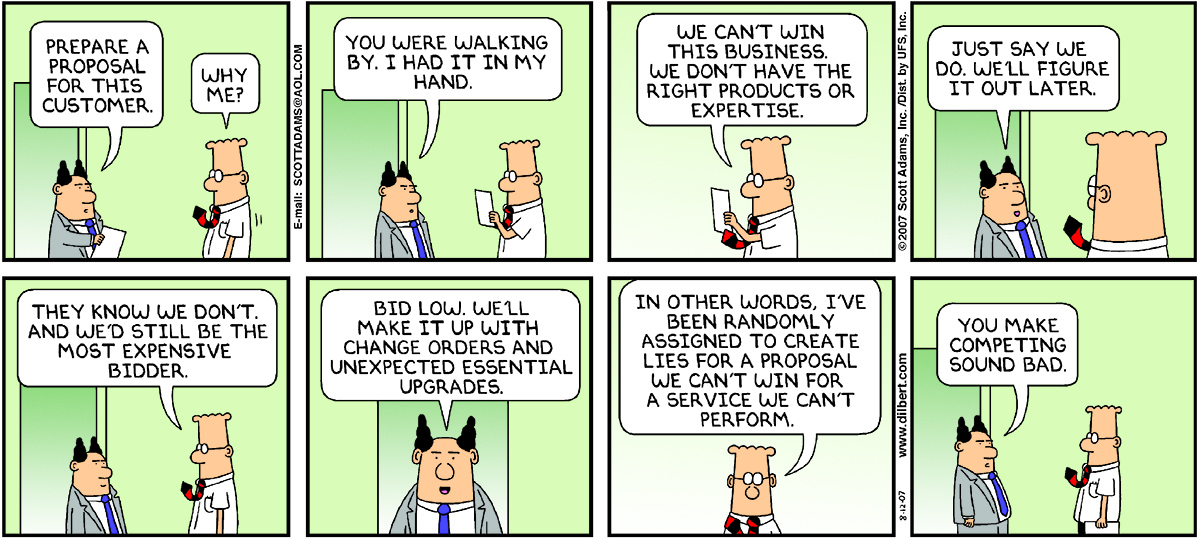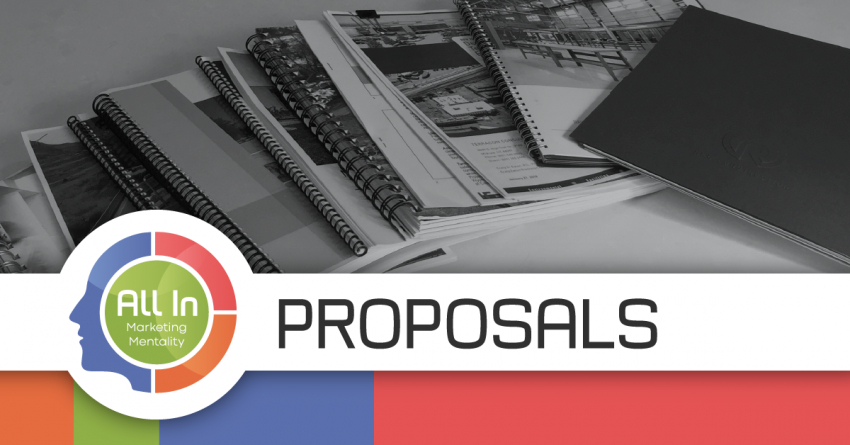
The key to a winning AEC industry proposal is strategic collaboration. At every step, you should know the who, what, when, where, and why. Oh, and don’t forget HOW!
- Who will be leading the process, and what is your role?
- What are the client’s needs, key issues, project challenges, etc.?
- When are the various milestones in the proposal production process that will keep you on schedule?
- Where will production take place?
- Why is this project significant in achieving your overall firm’s marketing plan?
- But the HOW is the most critical step. Will your proposal show HOW you will provide the client with the best possible solutions to the project’s challenges?
The answer to these questions requires an All In mentality and cannot be the sole responsibility of one person. Firm management, business development professionals, marketing leaders, project managers, and marketing coordinators all play a crucial part in a successful proposal submittal.
Here are six key strategies to take advantage of the wealth of knowledge your entire team has to offer:
- Prepare even before the RFP drops. Who is the potential client? What do you know about the upcoming pursuit? What information can you gather so you are positioned to be a knowledgeable candidate? Holding strategic pursuit meetings frequently before the RFP drops is a vital step in having a collaborative strategy. These update meetings should include all colleagues that will have any part, no matter how small or large, in the proposal development process. This tactic provides an opportunity to brainstorm strategic approaches to client and project research. It also educates non-technical staff on critical elements to include in the proposal.
- Break down the RFP together. Categorize hot button points and client needs. Discuss the best approach for the proposal. Ensure everyone on the team has the same understanding of the RFP, client, and potential job.
- Apply the RFP to your Go/No-Go Decision Matrix. Everyone has a say in whether to pursue the RFP. If any member of the proposal team has hesitation about their specific responsibilities, it should be a No/Go.
- Firm leadership: Does this RFP/project fit with the overall goals of the firm? Are you willing to commit resources to service this client and project? Can you be profitable on this project? Will this client lead to future work, or is this a one-and-done project?
- Marketing and business development leaders: Have you been tracking this project and actively pursuing a client relationship before the RFP hit the streets?
- Technical professionals: Is this a client and project for which you have a deep knowledge of project challenges, funding sources, site constraints, competition, selection committee, and influencers? Can you allocate the appropriate time to write and provide a thorough, comprehensive, and tailored project approach and management plan? Is this a client with whom you want to develop a long-term partnership? Can you be responsive to the needs of this project and client? Do you have a team with technical expertise relevant to this project?
- Marketing Coordinators: Do you have time in your schedule to coordinate the proposal and produce the final document? Is the boilerplate information up to date so that technical staff can stay focused on the approach content? Do you have the commitment from all proposal team members to meet the production schedule and quality control milestones?
- Divvy up roles and stick to deadlines. Technical professionals and the marketing team have different jobs in a proposal, but everyone must do their part on time. All team members must commit to the proposal schedule so that you’ll meet critical milestones.
- Reconvene for review. Make sure the proposal is complete, without significant errors, and up to your firm's standards. All parties need to review the submission thoroughly, not just the proposal coordinator. Principals and other staff members are essential to involve in this review process as a third party’s perspective can be vital in making sure there is continuity in approach.
- Submit and reflect. Make any needed changes to your boilerplate. Is there anything you would do differently next time? When and how can you reach out to the client? The more input in this area, the better. From principals to graphic designers, every person will have an idea of how your proposal process can improve.
Finding your role in the AEC proposal process can seem overwhelming at times. But once you understand that your knowledge, expertise, and assistance can be helpful during any stage, you can focus on the right tasks.






